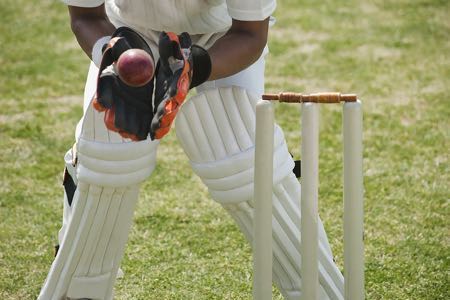 Cricket is famously confusing and difficult to understand for those new to the sport, with a raft of seemingly complex and arcane laws and terminology. On the 6th of December, 2023, we witnessed a dismissal that made that notion very apparent, as Bangladesh’s Mushfiqur Rahim was given out in a way that has only ever occurred once before in the 150-year history of Test cricket. This was the 2,517th Test match in the history of the sport and only the second time a batter had been given out for obstructing the field.
Cricket is famously confusing and difficult to understand for those new to the sport, with a raft of seemingly complex and arcane laws and terminology. On the 6th of December, 2023, we witnessed a dismissal that made that notion very apparent, as Bangladesh’s Mushfiqur Rahim was given out in a way that has only ever occurred once before in the 150-year history of Test cricket. This was the 2,517th Test match in the history of the sport and only the second time a batter had been given out for obstructing the field.
Rahim finds himself in good company, with one of England’s greatest players of all time, Sir Len Hutton, the only other player to have been given out this way. But what is obstructing the field? And how many methods of dismissal are there in cricket? Are there any other unusual ways a batter can get out that a cricket newbie might not be aware of?
10 Ways to Be Out in Cricket

According to the ICC, the International Cricket Council, there are 10 different ways a batter can be out. Around half of these account for the vast, vast majority of dismissals, with the others, including obstructing the field, very rare. The 10 methods of dismissal, according to the laws of cricket, are:
- Bowled
- Caught
- LBW (leg before wicket)
- Run out
- Stumped
- Hit wicket
- Obstructing the field
- Timed out
- Hit the ball twice
- Retired out
The first three on that list are by far the most common, with numbers four and five also fairly typical. We will assume that if you are reading this article you have at least a basic understanding of the game and so we will not explain these. Therefore, let us now consider the other modes of dismissal.
Hit Wicket
Hit wicket is covered by Law 35 and has various subsections covering a range of scenarios. However, in simple terms, hit wicket refers to an occasion where the batter dislodges their own stumps, either with their bat or any part of their body. This can occur at any time between the bowler entering their delivery stride and the batter setting off for their first run.
Obstructing the Field
Obstructing the field (Law 37) covers a range of different actions and, since a change to the laws in 2017, this also includes what was previously an 11th mode of possible dismissal, handled the ball. “Handled the ball” means where a batter has deliberately hit the ball with their hand whilst not holding the bat (with that hand). This happened seven times in Test cricket prior to the 2017 change in the laws.
More generally obstructing the field covers any instance where a batter “wilfully attempts to obstruct or distract the fielding side by word or action.” Examples include deliberately running in front of a fielder to prevent them from enacting a run-out, catch, or other action, running on an unnatural line to prevent the fielder’s throw from reaching the stumps or keeper, or even shouting out as a fielder is poised to take a catch. However, where such actions are taken in order to avoid injury to themselves or are accidental, this will be given not out.
Timed Out
Another rare way for a batter to get out, this is more straightforward than some of the others listed and is detailed in Law 40. In short, a new batter has three minutes from the previous dismissal to be ready to face the next ball. This is quite probably the rarest way of them all to get out and the first instance in international cricket happened in 2023 and was highly controversial.
Hit the Ball Twice
Law 34 explains the intricacies of this method of dismissal, which, as with the others we are providing information about, happens very infrequently. This is fairly self-explanatory and means that the batter cannot hit the ball twice “in one go”. However, it is worth noting that the “hit” can be off any part of their person, so for example if the ball hits their pad, they cannot then hit it with their bat. There are exceptions to the general rule too, and of course if the ball flicks the pad or bat before hitting the other, this is not out.
The key rule to note here though is that the batter can hit the ball a second time to guard their wicket. If the ball hits the bat and bounces up in the air, for example, they can hit it again with any part of their body or bat “other than a hand not holding the bat” in order to stop the ball from hitting their wickets.
Retired Out
To the best of our knowledge, this mode of dismissal has happened just twice in international cricket. Both occurred in the same innings in 2001 in a clash between Sri Lanka and Bangladesh. A more normal method of a batter departing is retired hurt, or injured, where a batter leaves the field due to illness or injury. However, this is not a dismissal and should they regain fitness, or decide the state of the match demands they play through their ailment, they can return to the crease and continue their innings.
Retired out, in contrast, is one of the 10 methods by which a batter can be out. This occurs when the batter leaves the field of play for any other reason, without the umpire’s permission. They may essentially forfeit their wicket and cannot return, but this is an action rarely taken in competitive games. In warm-ups or similar matches, it is undertaken more frequently, in order to allow other members of the team time at the crease.
Should a player retire in this fashion the opposing captain may grant them an exemption to return but this has only happened once in the Test arena. In the early 1980s, West Indian legend Gordon Greenidge was told his daughter had fallen critically ill. He retired to be with her but sadly she died a couple of days later. As a sign of respect, he was given an exemption and his score was recorded as retired not out instead.
